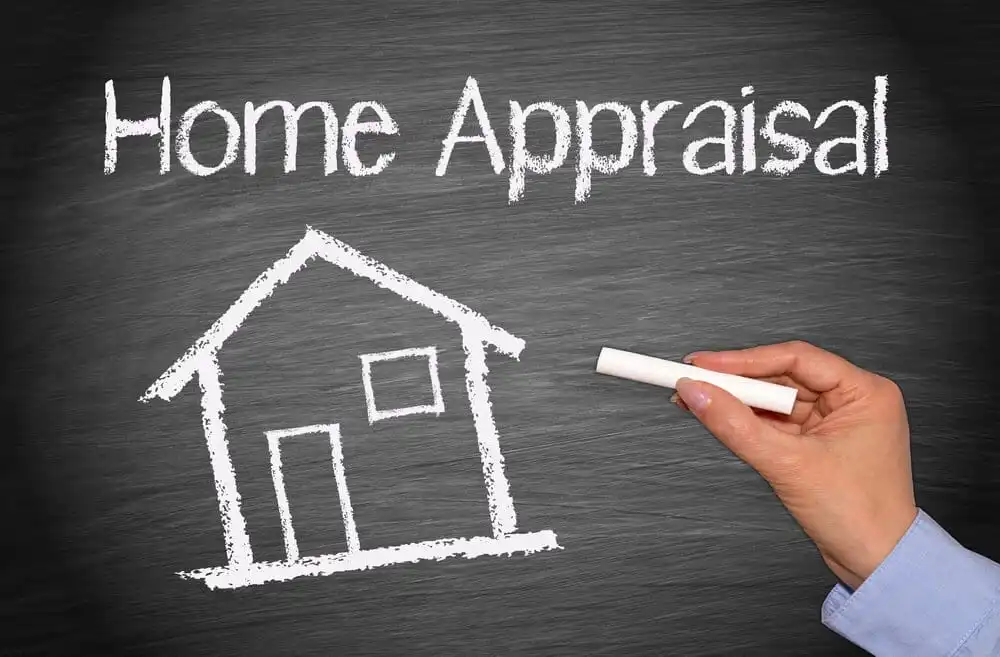NOTE: We have updated this subject with new information. For updates on the appraisal transfer, see our latest article.
When lenders receive a loan application they actually begin the process of issuing two separate approvals, not just one.
If either doesn’t meet the standards the loan won’t be approved.
These two approvals involve the borrowers and the property. The borrowers are approved based upon credit, income and assets and the property is approved based upon an acceptable property appraisal.
Once buyers receive an accepted offer on a home they’ve selected, the approval wheels begin to turn. During the time the lender reviews the loan application and supporting documents, an appraisal is ordered from an appraisal management company. The lender no longer orders the appraisal directly from the company from a separate company that places the appraisal order, receives the appraisal then forwards the report back to the lender. The lender does not have any direct contact with the company performing the appraisal.
Property appraisals are paid for upfront and will vary on cost based upon the type of property, the location and the amount of information required. An appraisal fee can range anywhere from $400 to $500 for a standard report, much higher for “jumbo” properties where the loan amount will be higher than the local conforming loan limit which is currently $417,000 in most places.
Yet what many borrowers don’t know is even though the borrowers pay for the appraisal it doesn’t belong to them. It’s the property of the lender who made the initial request. In fact, on the very front of the appraisal it states very clearly who the appraisal was prepared for-the lender, not the borrower.
Is this important?
It is when the borrowers decide, for whatever reason, to transfer a loan application from one lender to the next or their application was denied and they found a lender who could approve the loan after all. But the problem with this scenario, among others, is the lender who ordered the appraisal is under no obligation to transfer it to another lender. Most lenders do honor such a request but there can be times when a lender decides otherwise.
Let’s say a couple pays for an appraisal yet somehow during the loan process the lender informs them due to their debt to income ratios they can’t get their loan approved. They make a few calls and are referred to a lender that does have a program that allows for higher debt ratios as long as there is a minimum credit score of 720. The borrowers do have good credit so they request a transfer. The original lender then agrees to transfer the original appraisal and the new lender makes a request for a transfer. The appraisal is transferred electronically and the new lender uses the old appraisal with their name on the appraisal.

The Basics of a Home Appraisal App
When transferring an appraisal to Home Point, understand that there are certain guidelines that must be followed but they’re standard and most lenders use the same or similar protocol.
The appraisal must be Uniform Appraisal Dataset (ADA) compliant.
If there are any corrections that need to be made or more comparable sales are required, the original appraiser must agree to provide that data.
The appraisal must not have been ordered by an interested party and the appraiser cannot be on our Exclusionary List, Agency List of HUD list. These lists provide the names of appraisers who have been fined or barred from providing an appraisal for conventional and government-backed loans.
The original lender ordering the appraisal must provide a Transfer Letter on company letterhead showing the date of the submission, name, address, statement of compliance with the signature of a company executive.
Once the appraisal has been received it will be reviewed by our underwriting department for acceptance. In most cases the appraisal can be transferred but if we cannot accept the appraisal based upon our internal guidelines a new appraisal must be ordered.
Conventional, Government and Jumbo Transfers
Appraisals completed under VA, FHA and USDA loan guidelines are readily transferable as are appraisals prepared for conventional loans. However, most jumbo lenders will not accept a jumbo appraisal and will require a new one. Depending upon the sales price and the amount of the loan, a jumbo appraisal app can easily run $700 or more. If a jumbo lender doesn’t accept transfers, it means another payment of $700 must be made and the old appraisal is no longer valid.
However, here at Home Point we do accept jumbo transfers as long as the transfer meets our guidelines and there is no need to pay for a new appraisal. It’s important to note the appraisal as well as the original lender must follow our guidelines and most usually they do. Lenders have a reputation to uphold and if they’re known as a company that doesn’t work with other lenders and is non-cooperative with borrowers it ultimately hurts their bottom line.
If you or someone you know is in this situation have them call us and we can walk them through the process. We contact the old lender on your behalf so you don’t have to other than providing us with a written appraisal transfer request.



